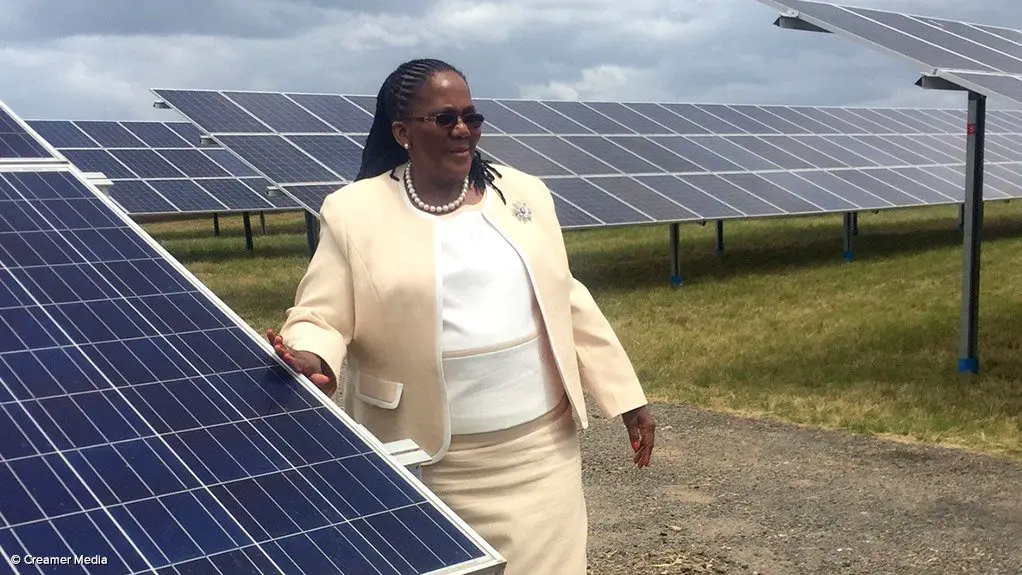Airports Company South Africa (ACSA) on Friday unveiled a US$876000 solar power plant at Kimberley Airport as part of ACSA’s wider plan to install solar farms at all its six regional airports.
The construction of the Kimberley Airport plant started in September last year and was finished in April.
Speaking during the official launch of the plant, the Minister for Transport Dipuo Peters said that the plant was in line with government’s commitment to address South Africa’s energy pitfalls.
“The diversification of the country’s energy matrix remains a key priority to ensure the sustainability of economic activity,” she said.
The solar farm is made of1 620 photovoltaic panels and sits on 700 m2 of land within the precinct of the airport.
The plant, which was previously using an 11 kV substation as its main source of power supply, had produced 141 870 kWh to date.
“The plant will produce 927 000 kWh a year,” noted ACSA regional airports GM Jabulani Khambule at the event.
In a statement, Khambule said that, due to South Africa’s high level of renewable energy capability and potential, ACSA had targeted generating 42% of its power requirements from renewable energy sources by 2030.
The airports company was also planning the addition of other forms of renewable energy to its energy mix.
“ACSA’s short-term energy goals include using [light-emitting diode] lights on our runways as well as on lights in our parking lots to reduce our energy consumption,” he said.
Khambule said that, with the solar plants at Kimberly, George, and Upington airports already commissioned and operating, construction of the solar power plants at East London Airport, Port Elizabeth International Airport and Braam Fischer International Airport, in Bloemfontein, would soon begin.
He added that a total of 36 jobs were created during the construction of the Kimberley Airport solar plant project. 26 of these were temporary jobs, five were permanent jobs and an additional five permanent maintenance jobs”.
